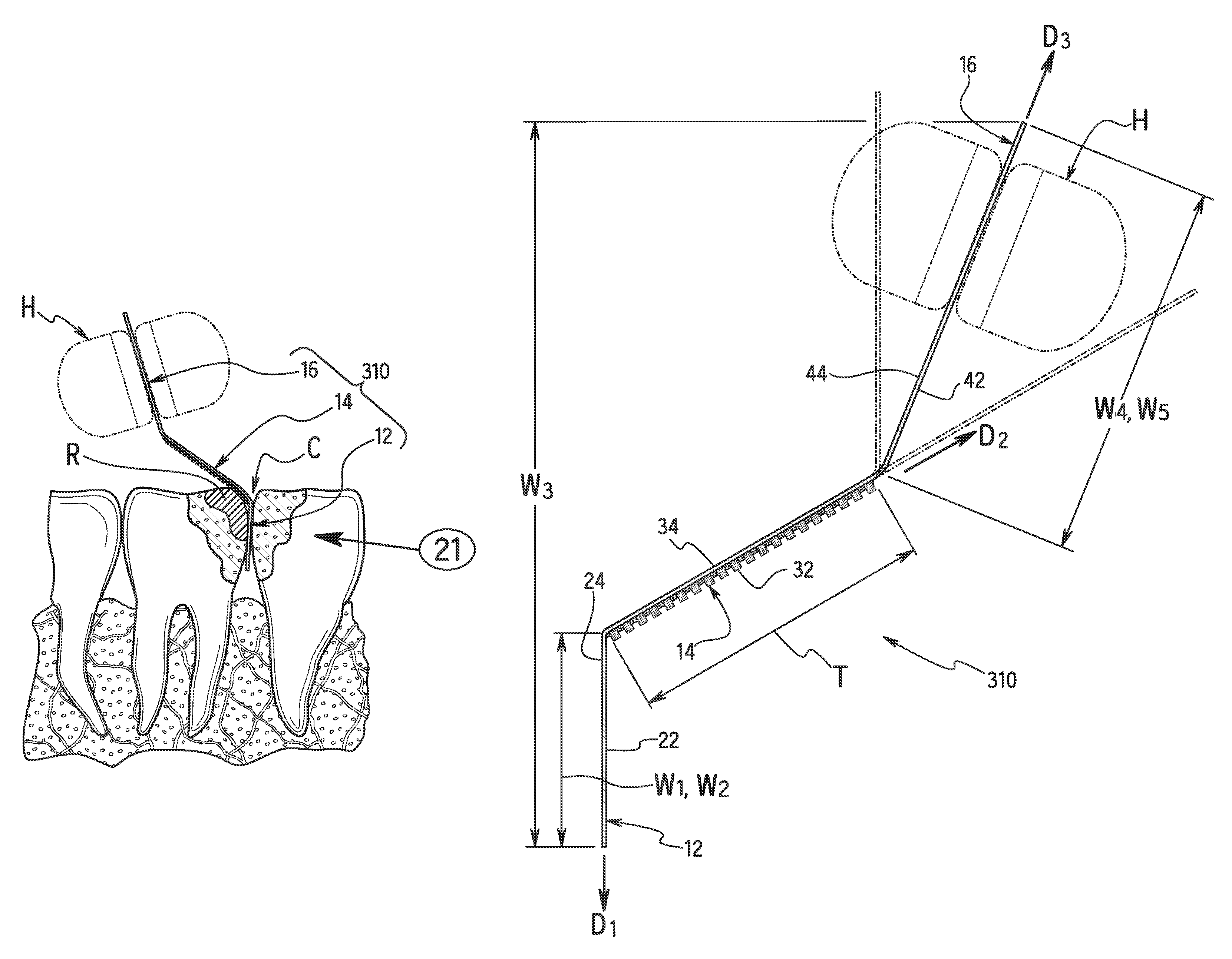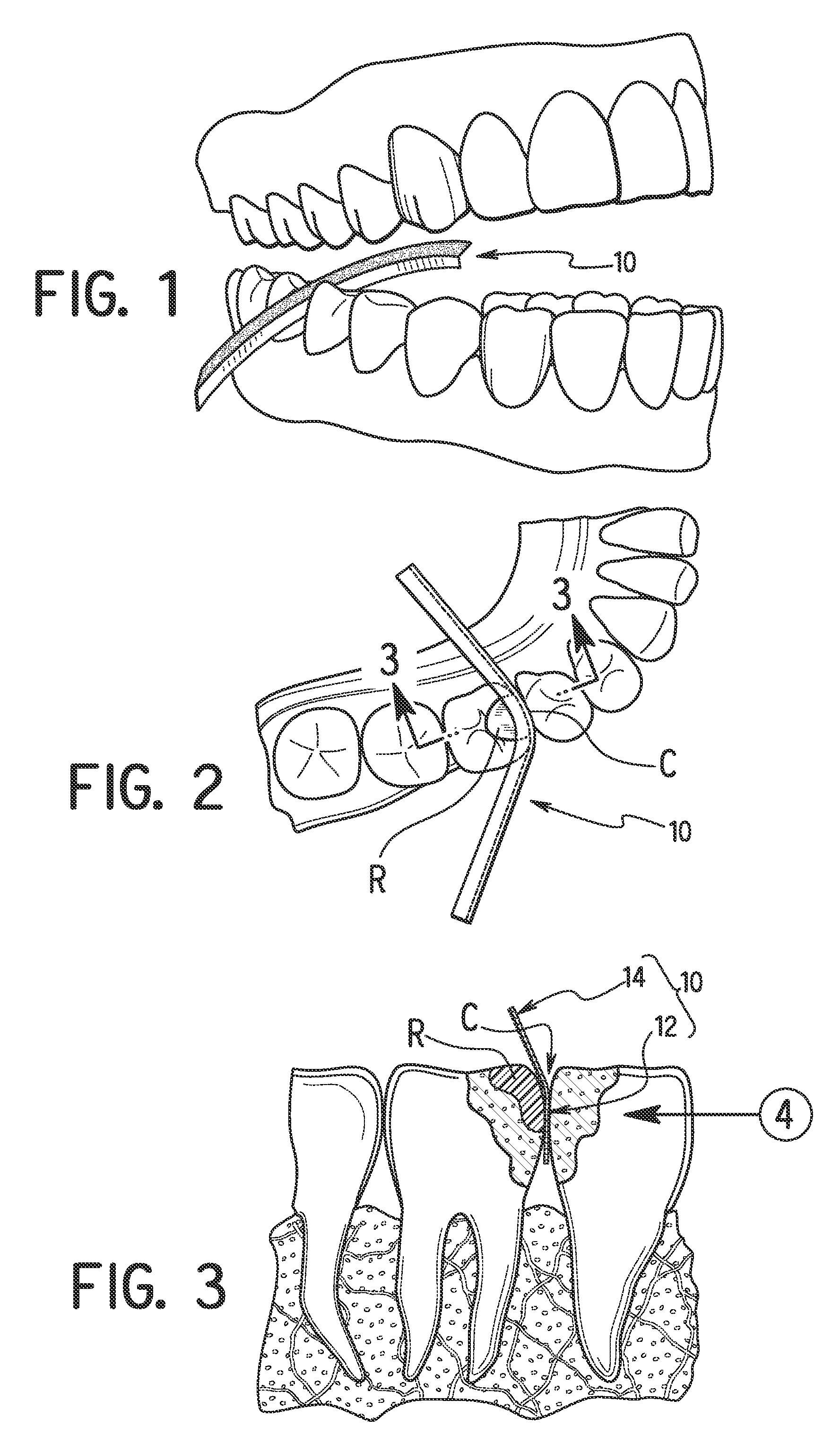Dental shaping strip
a technology for teeth and gums, applied in dental floss, dental saws, medical science, etc., can solve the problems of not allowing food, premature failure, and difficulty in placing composite restorations properly, and achieve the effect of not diminishing the tightness of the contact area
- Summary
- Abstract
- Description
- Claims
- Application Information
AI Technical Summary
Benefits of technology
Problems solved by technology
Method used
Image
Examples
second embodiment
[0071]Referring now to FIGS. 16-18, a dental shaping strip 210 in accordance with a second embodiment will now be explained. In view of the similarity between the first and second embodiments, the parts of the second embodiment that are identical to the parts of the first embodiment will be given the same reference numerals as the parts of the first embodiment. Moreover, the descriptions of the parts of the second embodiment that are identical to the parts of the first embodiment may be omitted for the sake of brevity. In other words, the descriptions and illustrations of the first embodiment also apply to this second embodiment, except as explained and illustrated herein. Furthermore, it will be apparent from this disclosure that parts of this embodiment that are identical or functionally identical will be given the same reference numerals as the first embodiment but with “200” added thereto.
[0072]The dental shaping strip 210 is identical to the shaping strip 10 of the first embodi...
third embodiment
[0077]Referring now to FIG. 19-25, a dental shaping strip 310 in accordance with a third embodiment will now be explained. In view of the similarity between the first and third embodiments, the parts of the third embodiment that are identical to the parts of the first embodiment will be given the same reference numerals as the parts of the first embodiment. Moreover, the descriptions of the parts of the third embodiment that are identical to the parts of the first embodiment may be omitted for the sake of brevity. In other words, the descriptions and illustrations of the first embodiment also apply to this third embodiment, except as explained and illustrated herein. Furthermore, it will be apparent from this disclosure that parts of this embodiment that are identical or functionally identical will be given the same reference numerals as the first embodiment but with “300” added thereto.
[0078]The dental shaping strip 310 is identical to the shaping strip 10 of the first embodiment, ...
PUM
 Login to View More
Login to View More Abstract
Description
Claims
Application Information
 Login to View More
Login to View More - R&D
- Intellectual Property
- Life Sciences
- Materials
- Tech Scout
- Unparalleled Data Quality
- Higher Quality Content
- 60% Fewer Hallucinations
Browse by: Latest US Patents, China's latest patents, Technical Efficacy Thesaurus, Application Domain, Technology Topic, Popular Technical Reports.
© 2025 PatSnap. All rights reserved.Legal|Privacy policy|Modern Slavery Act Transparency Statement|Sitemap|About US| Contact US: help@patsnap.com



